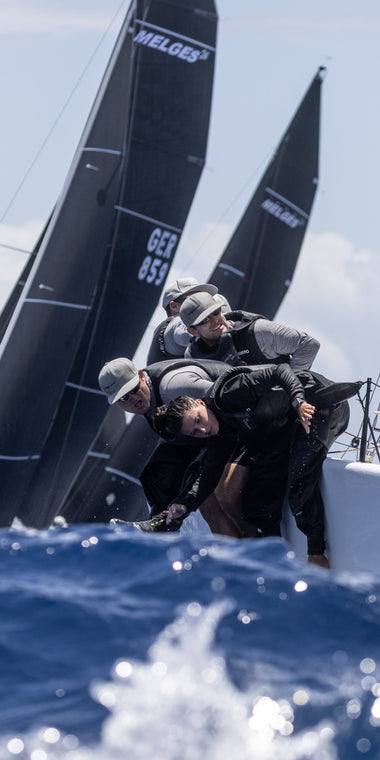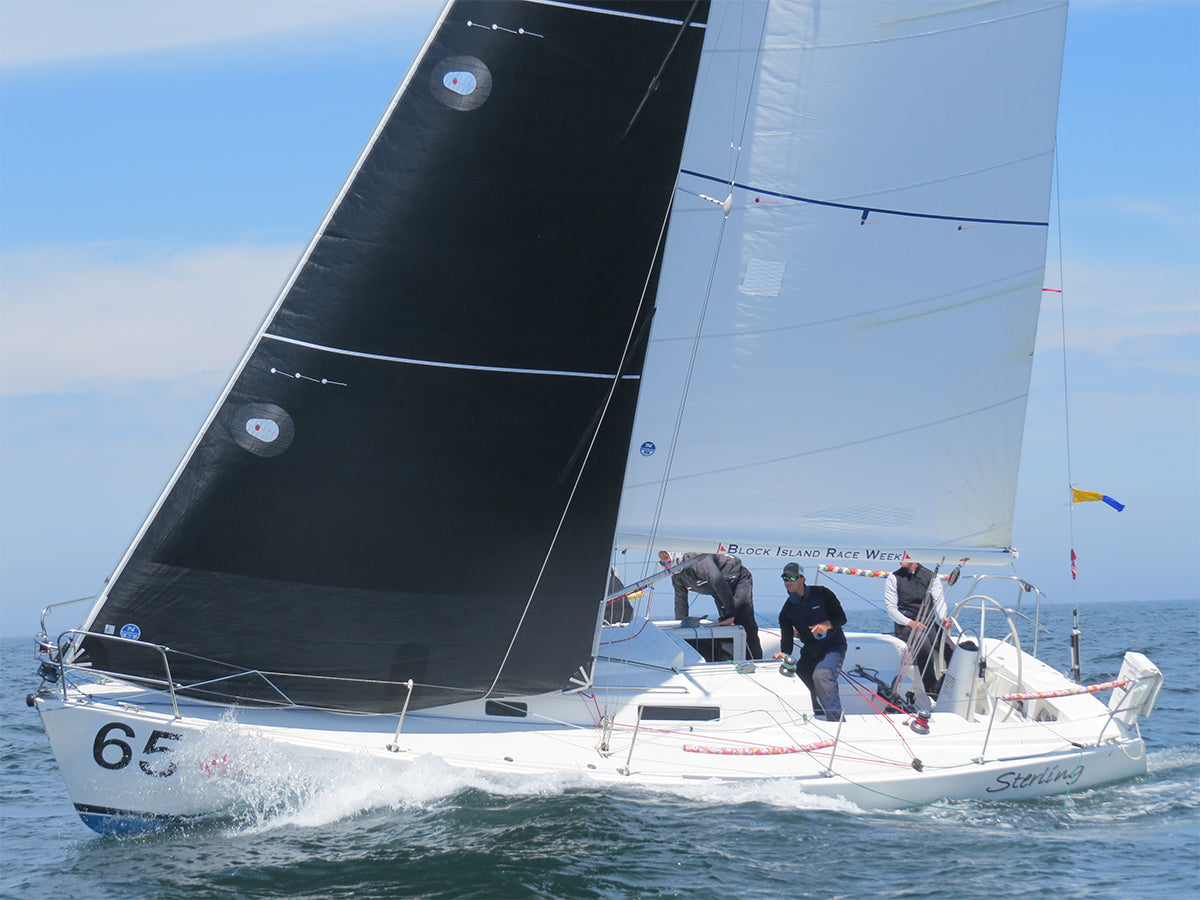J/105 JIB WEIGHT RULE CHANGE: WHAT IT MEANS FOR YOU
J/105 JIB WEIGHT RULE CHANGE
What It Means For You

How does the J/105, a boat that was introduced in 1991, remain one of the strongest one design classes 28 years later? There are two answers: the sailing qualities of the boat itself, and the Class Association Rules.
The boat is simple to sail but complex enough to attract top sailors and crews. For a 34 ft boat, the J/105 is pretty affordable, especially when it is both an acceptable weekend cruiser and capable offshore platform. So it maintains a high resale value.
But the real success of the J/105 Class is a direct result of the conservative management of class rules, which includes a careful consideration of updates. We all balk at change, especially if we don’t know what the outcome of that change will be, but it is both natural and inevitable.
So, you ask, “How is this jib bag weight change going to affect me?” J/105 North specialist Will Keyworth one-word answer is….“positively!” This is a great rules update for all J/105 owners who actively race their boats, and class leaders drafted it only after requesting input from all the class sailmakers. “My view is that the result will be sails that are better, not just lighter.”
The result will be sails that are better, not just lighter. You don’t have to buy a new sail to comply with the rule, but the next sail you buy will be a better one.
You’ve probably already had discussions with other J/105 owners that start off with any of the following questions: Will a lighter sail last as long? How does this specifically affect the Light, Medium, and Heavy jibs? Do I have to buy a new sail now that the rule has changed? Will it cost more? All great questions, so let’s discuss them.
First, a bit of class history to explain how we got here. Since this rule was introduced in the mid 90s, class-legal jib materials have gotten much stronger: from woven Dacron, to Mylar film/Darcon laminates, to Kevlar laminate, and finally to Carbon laminates. Meanwhile, the Class minimum weight stayed the same. When Kevlar (and later carbon) became the material of choice, sailmakers had to add extra weight to the sails just to comply with the class bag weight. This weight was typically added by applying extra corner patching, especially in the tack; that bulk made it difficult to furl the sail tightly. So to answer “Will a lighter sail last as long?”, consider this: None of that “parasitic” weight did anything to improve durability or performance, and it actually made handling the sail harder.
How Does This Specifically Affect The Light, Medium, and Heavy Jibs?
The rule change from 23lb to 19.8lb represents a 14% reduction in bag weight, but even so an AP or Medium jib will have to be slightly over-built (with more load-bearing fibers than it needs) to comply. A Light jib will have to be significantly over-built, while the Heavy jib will end up at the correct weight without adding any extra fiber.
The new bag weight will enhance performance by reducing parasitic weight and improve handling, all without reducing durability.
Do I have To Buy a New Sail Now That The Rule Has Changed?
You don’t have to buy a new sail to comply with the rule, but the next sail you buy will be a better one.
Last But Not Least: Will It Cost More?
Since no expensive material (Carbon or Aramid) will be removed, my guess is that there will be no significant price change.
The bottom line is this: the new bag weight will enhance performance by reducing parasitic weight and improve handling, all without reducing durability. Better performing sails that are easier to handle and equally durable? That sounds like an improvement that will help keep the J/105 going strong, for at least another 28 years.
Is North Working on New Designs? When Can I Order the New Jibs?
Our designers are working on new jibs shapes for the J/105. A sail testing is planned for late summer. Sails can only be purchased with 2020 sail tags and are not legal until Jan 1, 2020. Advance purchase orders can be placed starting in November of 2019 for 2020 delivery.



























